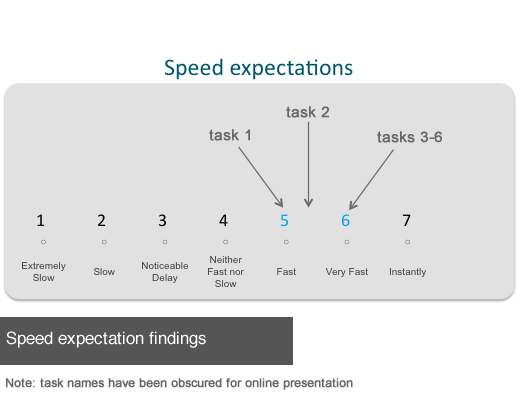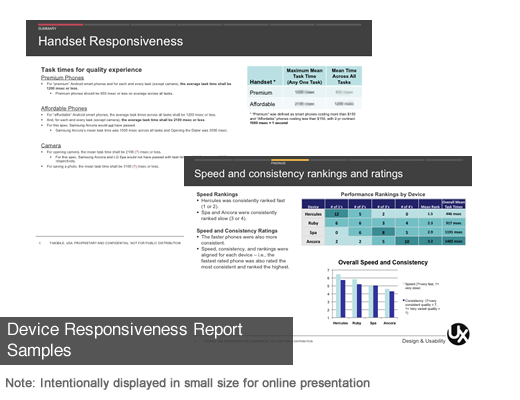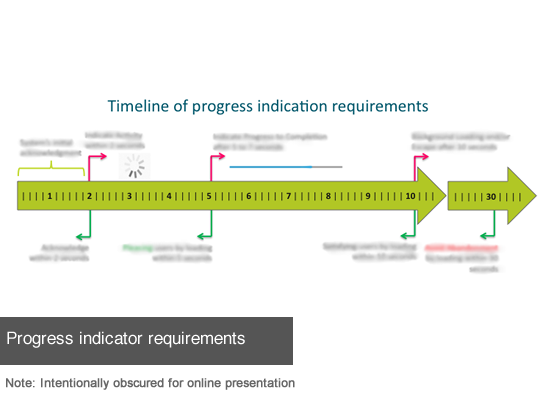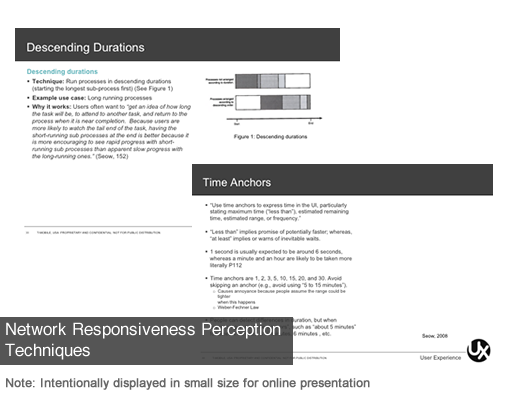Device Responsiveness: Requirements Creation
T-Mobile | 2012 - 2013
Part One: The Device Responsiveness project involved a lab study that resulted in a technical requirements document that all Android smartphones offered by T-Mobile were required to adhere to.
Part Two: The Network Responsiveness project looked at how interfaces can be designed to create the perception of speed. Through an extensive literature review my colleague and I were able to identify what type of progress indication should show and when. By combining this work with Device Responsiveness requirements we have developed solid guidelines for not only ensuring devices are fast, but also that they are perceived as such.
RESULTS
- Part One:
- Based on user research we were able to quantify what is acceptable or not in terms of UI speed.
- We learned exactly how fast the interface should respond, and that users didn't necessarily expect things to respond instantaneously -- just “very fast”. They also have different expectations of how fast the device should behave for different tasks.
- We authored a Product Requirement Document (PRD) based on the findings of our research to ensure that all of our devices will meet the bar of quality.
- We introduced quantifiable measurements of "fast" and "slow" that have not been implemented by other carriers.
- Part Two:
- We provided clear results and guidance to four different Project Owners at T-Mobile to best improve their products and services.
ROLE
- Part 1 -- Researcher: with one other colleague and myself, we conducted a study with 20 participants to understand what was acceptable and unacceptable in terms of UI speed using four different Android devices that ranged in tier and cost. Together we presented this research to 3 VP's at T-Mobile to receive their buy-off on the new requirements.
- Part 2 -- Researcher: Conducted an extensive literary review on previously conducted studies regarding progress bars, the perception of time, and methods of disguising slow loading times.








 iPhone Apps Design
iPhone Apps Design 
 LinkedIn
LinkedIn Twitter
Twitter